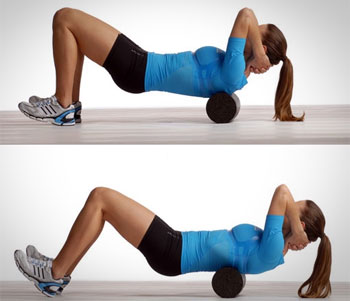
Bend me, shape me…
Triathon training. It’s all about swimming, cycling and running, right? Well yes…and no.
It’s so tempting to finish a tough training session and promptly collapse on the sofa (that’s not just me is it?). But what you do immediately after exercise could be the most important few minutes of all.
Arguably two of the best additional elements you can add to your training are stretching and foam rolling. They might not represent the most glamorous side of triathlon preparation but a few minutes a day will be a valuable investment of your time.
Stretching after Triathlon Training
There is an ongoing debate in the fitness industry about the benefits of stretching, but in my experience a few minutes of stretching at the end of a training session can save a couple of days of aching muscles!
What does it do?
When muscles work they contract so post-training stretching lengthens the muscles. This improves your range of motion – your ability to move without pain or resistance – and increases your flexibility. This translates into you being able to improve your technique, thus moving more efficiently. The result? You can go faster!
Why do I need it?
Imagine you are in the swimming pool. Tight shoulder muscles will mean you can only move your arms in a limited range of movement. Your hands will probably enter the water to the side rather than in front of you and you won’t be able to pull so hard with every stroke. Your power will be reduced, your stroke will be inefficient, and you will use a lot of effort not going anywhere very quickly!
Spend 5-10 minutes every day – and especially after your training – to stretch all the major muscles. Time well spent when you can smash it again at your next training session!
Foam Rolling after Triathlon Training
In an ideal world we would all have the time and money to indulge in a deep tissue sports massage on a regular basis. But unfortunately this is normally the preserve of the pros. A great alternative is to use a foam roller – a self-administered massage without the price tag!
What does it do?
The use of your own body weight on a firm foam cylinder/roller helps to relax and lengthen muscles, bringing about similar benefits to stretching as described above. This is particularly useful for problem areas which need greater attention than stretching can provide, or for parts of the body which are very hard to stretch effectively such as the iliotibial band. Foam rolling also helps to improve circulation and blood flow, thus promoting the body’s own healing process for sore muscles.
Why do I need it?
When cycling for example (or when sitting at a desk for long periods), your hip flexors will shorten up. When you try to start running off the bike, tight hip flexors will inhibit your running gait causing you to take shorter strides, again leading to an inefficient technique and possibly causing injury as your body moves in an unnatural motion. This obviously has a direct impact on your enjoyment and success of your training and racing.
When I’m asked what piece of home fitness kit to buy, I always recommend going for a foam roller (under £20) rather than splashing cash on the latest fitness fad. This humble piece of kit will earn its keep many times over.
So you’d like to take Rachael’s advice and implement a post-training foam roller session? Runner’s World offers some great ideas (with videos!) on how to use your foam roller… And though they mention running specifically, these moves are perfect pre- and post-ride as well!
1 Comment
Pingback: Bend Me, Shape Me… | Rachael Willis Personal Training